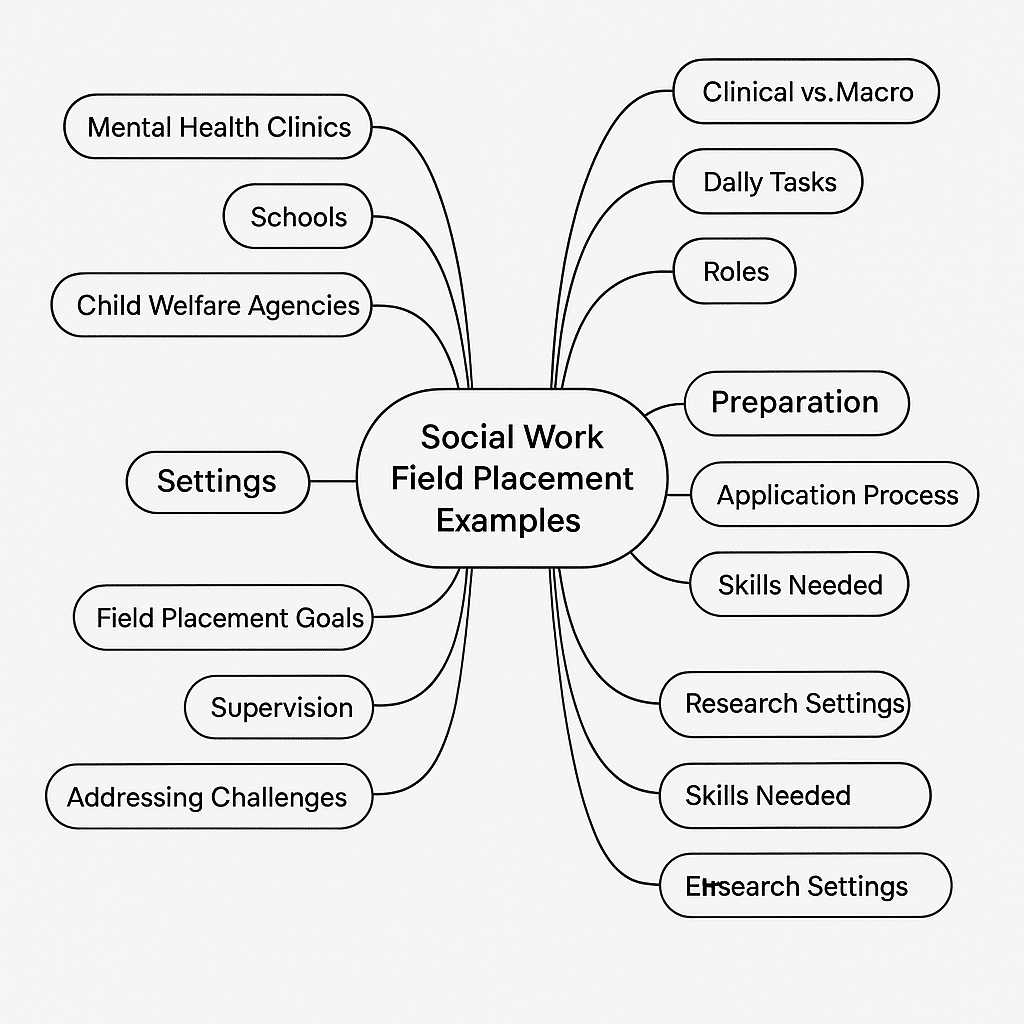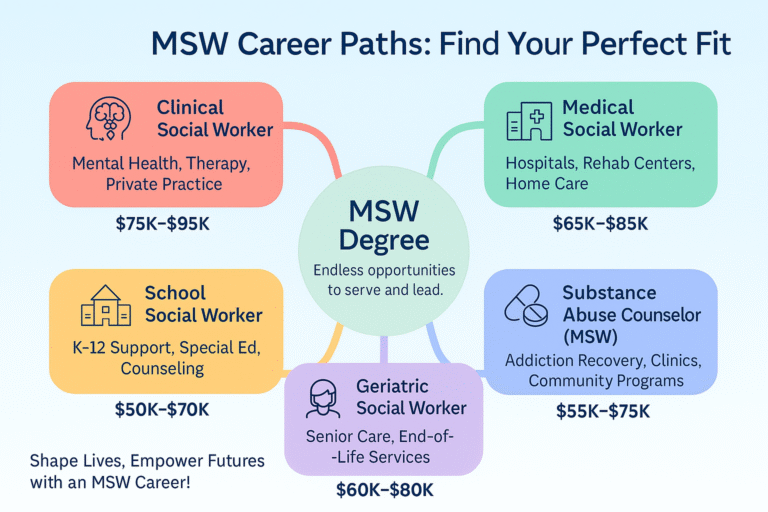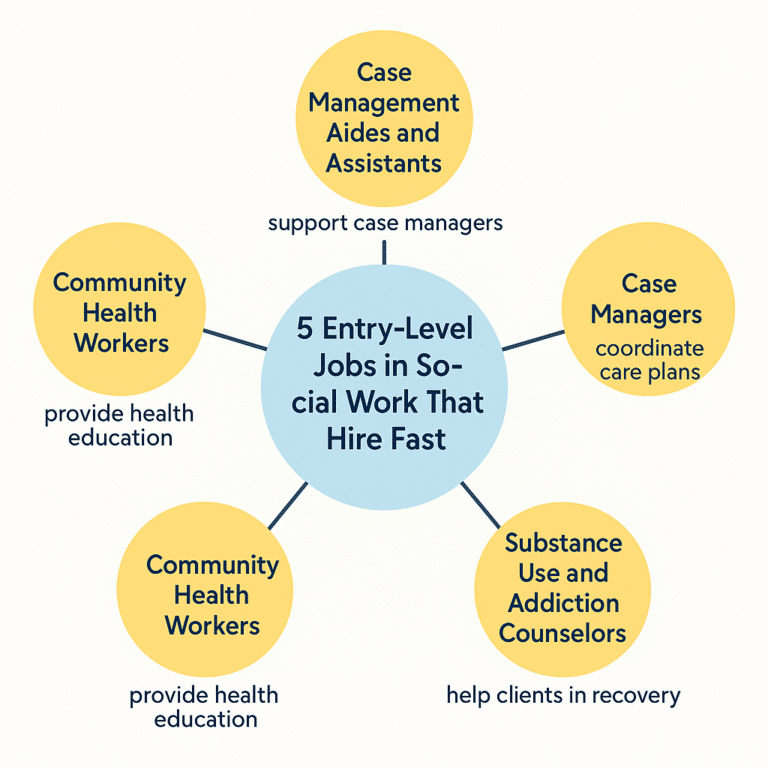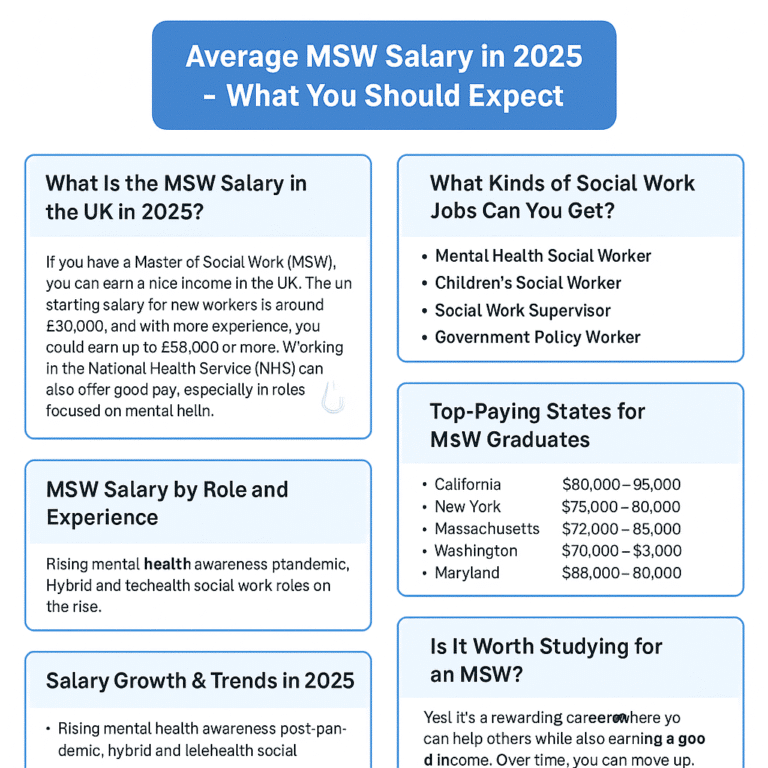Explore Social Work Field Placements: Settings & Real Examples

If you’re working toward your social work degree, you’re probably wondering what a field placement is and where you’ll be working. Let’s walk through everything you need to know—from settings and requirements to real examples of what this important experience looks like. This guide is written in a friendly tone and at a 6th-grade reading level to help make things clear and easy to follow.
What is Social work Field Placement Examples?
Social work field placement examples include working in hospitals, schools, mental health clinics, child welfare agencies, government offices, and through telehealth platforms—where MSW students apply their classroom learning in real-life settings under supervision.
Field Placement Requirements
Before starting your placement, schools and states ask students to meet some basic rules. These rules help you and the people you’ll be helping stay safe and get the most out of the experience.
Accreditation
To begin your placement, make sure your school is approved by CSWE (Council on Social Work Education). This tells future employers that your training meets the right standards.
BSW Requirements
If you’re earning a Bachelor of Social Work (BSW), you’ll likely need to complete between 400 to 480 field hours. You’ll work under supervised practice and focus on building social work competencies like client assessment skills and casework.
MSW Field Placement Requirements
Master of Social Work (MSW) students usually need to do 900 or more hours. You’ll get hands-on training in clinical supervision, community engagement, and more.
Advanced Standing Requirements
If you already have a BSW and are in an Advanced Standing MSW program, your hours might be fewer, but you’ll still complete a specialized placement focused on evidence-based intervention.
Accelerated Requirements
Fast-track MSW programs pack a lot into a short time. You’ll do your foundation placement and specialized placement in a tighter schedule.
State Requirements for Clinical Licensure
If you’re aiming to be an LCSW (Licensed Clinical Social Worker), your state may ask for even more hours. Always check the NASW (National Association of Social Workers) or your state’s social work board.
Clinical vs. Macro Field Placements
| Feature | Clinical Placement | Macro Placement |
| Focus Area | One-on-one client services | Community or policy-level work |
| Common Settings | Hospitals, mental health clinics, private practice | Advocacy orgs, policy offices, nonprofits |
| Supervision | Clinical Social Worker | Community Program Director or Macro Supervisor |
| Typical Tasks | Assessments, therapy sessions, case documentation | Outreach, program planning, policy analysis |
| Best for | Students pursuing LCSW or clinical licensure | Students interested in advocacy or administration |
What to Expect
Your field placement is like an internship learning goal playground! You’ll be working with real people, learning real skills, and getting ready for your future job.
- You’ll have a Field Instructor to guide you.
- Expect to do daily tasks in social work placement like paperwork, talking to clients, or joining team meetings.
- You’ll learn how to advocate, solve problems, and stay professional.
Once you know the settings where social workers help people, learn about the best entry-level jobs to start your career.
Finding Your Placement
Most schools will help match you with a good location, but you may also go through a mini job-hunt process.
Interview
Some placements ask for a quick interview to learn more about you and your goals.
Foundation Placement
This is your first step, often focused on micro-level interventions like helping individuals or small groups.
Specialized Placement
Here, you go deeper into areas like mental health programs, policy development, or youth services. You’ll work on your internship learning goals and get stronger in your future specialty.
Want to succeed in your internship? Don’t miss Crack MSW Internships 2025: Your Ultimate Success Guide — packed with tips to help you shine in every placement setting
Social Work Field Placement Examples

You could be placed in one or more of these settings:
Micro Level
Work one-on-one with clients. Common sites include:
- Mental Health Clinics
- Child Welfare Services
- School Social Work
Mezzo Level
Help families or small groups. You might be placed in:
- Nonprofit organizations
- Youth support centers
Macro Level
Focus on big-picture change. Macro placements include:
- Public Policy Offices
- Community advocacy projects
- DEI-focused social work placements
Curious about the bigger picture or one-on-one practice? Choosing Macro vs Micro Social Work in 2025? Start Here helps you pick the right path for your field placement goals.
Virtual
Remote social work field placements and telehealth internship social work are growing fast! These placements are flexible and perfect if you’re balancing school and work.
Cost
Usually, you don’t have to pay for your placement, but it may affect your work schedule. Some placements even offer a stipend or scholarship, especially in trauma-informed practice internships.
Supervision
Your Practicum Coordinator or Field Instructor will check in with you often. They’ll help you learn, grow, and follow the NASW Code of Ethics.
Documentation
You’ll keep track of your hours and what you’ve learned. This is part of your reflective learning in placements and helps show your social work competencies.
MSW Field Placement Student Checklist
- Attend all orientation sessions
- Set clear learning goals
- Track your hours weekly
- Request regular supervision feedback
- Bring a notebook for reflections
- Review the NASW Code of Ethics regularly
- Participate actively in team meetings
- Ask questions and seek support when needed
Conclusion
A social work field placement is your big chance to shine! Whether you’re working in-person, online, or in your community, your placement helps you become a confident, skilled social worker. Remember, this is your time to learn about human behavior, practice crisis response, and make a real difference!
Ready to dive in? Learn more about how to succeed in your social work field placement and discover the top field placement agencies for MSW students today!
Depending on your degree choice, fieldwork can differ—compare the MSW, MSSW, and MSSA programs to understand better.
FAQ
What is placement in social work?
A placement in social work is like an internship. It’s where MSW students work with real people in real settings—like schools, clinics, or nonprofits—to learn and practice what they’ve studied in class. It helps students become confident and caring social workers.
What are the main types of MSW field placements?
There are two main types of MSW field placements:
- Clinical placements – These focus on helping people one-on-one, like in hospitals or mental health centers.
- Macro placements – These involve helping whole communities or working on big issues, like in nonprofits or government offices.
How many hours are required in an MSW field placement?
Most MSW students need to complete between 900 and 1,200 hours. These hours are split across one or two years, depending on your program. It may sound like a lot, but it helps you grow your skills step by step.
Can MSW field placements be done online?
Yes! Today, many MSW programs offer online or hybrid placements. These include virtual counseling, telehealth, and remote community work. They give students more flexibility while still learning important skills.
What’s the difference between clinical and macro social work placements?
- Clinical placements focus on helping individuals with personal challenges like mental health, family issues, or trauma.
- Macro placements focus on big-picture work, like writing policies, running programs, or advocating for social justice.
Also Read it: Top Jobs After MSW, MSSW, or MSSA






One Comment